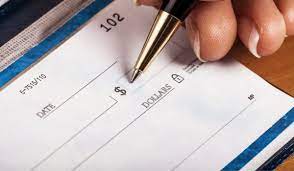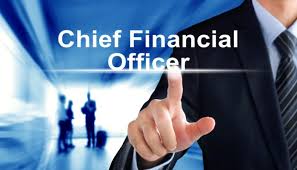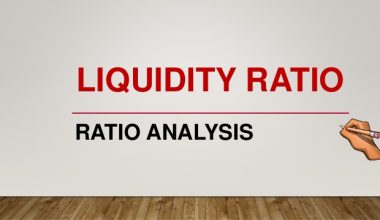It’s crucial to comprehend the variations of checks and when to employ them. You might discover that you desire the security, assurance, and verification that checks provide as your level of financial responsibility rises. In the course of this article, you will get to know the different types of checks that banks issue to account holders in the course of this article.
Types of Checks
First, we need to know the meaning of a check: A check is a piece of paper that you can provide to your bank, telling it to give the stated amount in words and numbers to the person whose name is written on the check.
The term “negotiable instrument” also applies to checks. A negotiable instrument, as used in banking, is a record that guarantees its bearer payment of the specified sum upon presenting the document to the banker or by a set date.
Who Are Those Involved With a Check?
Three parties are engaged in the on-track transfer of money through a written paper source under the check form of fund payment. The person to whom a check is issued, or more simply, whose name appears on the check, is referred to as the payee. The issuing party is known as the “drawee” of the check. Three parties need to sign the check:
- Drawer: The person who instructs the bank to pay the amount on the check.
- Drawee: The bank on which the check is drawn or the person who is instructed to pay the amount mentioned on the check is the payee.
- Payee: The person to whom the money is to be given, or the beneficiary.
There are two additional parties to check-in in addition to the ones already mentioned:
- An Endorser: An endorser is a party who gives a party the right to receive money from another party.
- Endorse: The party to whom the right is granted is referred to as the endorsement.
When the drawer writes a self-check, the payee and the drawer may occasionally be the same individual.
A check that has only the issuer’s signature and no additional information is filled in is referred to as a “blank check.” It carries a high level of risk since, if discovered, the finder could issue the check to themselves.
Characteristics of a Check
- A check is an unqualified order.
- It is consistently drawn from a specific bank.
- It is mandatory and only the creator should sign the exchequer.
- The amount is always a predetermined amount from the account.
- A check is always payable.
- A check payment is always in cash.
- The individual named therein, or the holder of such order, shall receive payment in cash.
How Useful Are Checks?
Checks can be useful to send money as a gift, make payments, or move money between two entities. Since only the payee can tell the bank to move the cash directly, they are a safe method of money transfer. A check that has been lost or stolen cannot be cashed by anyone else.
What Are the Different Types of Checks?
Depending on factors such as who is the issuer and who is the payee, different types of checks may be useful. Based on these fundamentals, we examine the various types of checks in banks.
#1. Bearer/Owner’s Check
A bearer check is one that pays the person who is holding the check or carrying it. These checks can be transferred by delivery, meaning that you can receive a payment if you bring the check to the bank. The banks can make the payment without further authorization from the issuer.
How is a bearer check recognized? When the words “or bearer” are printed on a check, you can tell it is a bearer check.
#2. Order a Check
The phrase “or bearer” is crossed out on these checks. The bank will conduct its background investigation to verify the check bearer’s identification before making the payment.
#3. A Cross-Check
Checks with two sloping parallel lines and the phrase “a/c payee” inscribed on the top left may have been seen. It looks like a crossed check. The lines guarantee that, regardless of who presents the check, only the person whose name is written on it as the account payee together with his or her account number will receive payment. Because they can only be cashed at the drawee’s bank, these checks are relatively safe.
#4. Unopened Check
In essence, an open check is one that has not been crossed. Any bank will cash this check, and the person holding the check will receive the money. The original payee (the person who received the payment initially), as well as another payee, may receive this check. Both the front and back of the check must bear the issuer’s signature.
#5. An Older Check
These checks feature a future date of redemption. The bank will only process the payment on the date specified in the check, even if the holder submits this check to the institution right away after receiving it. Beyond the specified date but not earlier, this check is still good.
#6. Blank Check
A blank check is one that only has the issuer’s signature and has no additional information. Blank checks are extremely dangerous because, in the event that one is misplaced, anyone can write in any amount and issue it to themselves.
#7. Traveler’s Check
Instead of carrying bulky hard currency when on vacation, foreigners carry traveler’s checks. They receive these checks from one bank, which they can cash in for cash at another bank that is situated in a different city or nation. Traveler’s checks are valid for future journeys and have no expiration date.
#8. Self Check
Self-pay checks can be identified by the word “self” placed in the payee column. Only the issuing bank is permitted to draw on self-checks.
#9. A Bank Check
These types of checks are printed by banks. These checks are written by the bank on behalf of the account holder to pay a recipient in the same city. Here, the customer’s account is debited for the stated amount, and the bank subsequently issues the check. For this reason, bankers’ checks are referred to as non-negotiable instruments, and banks cannot refuse to honor them. For three months, they are effective. If certain requirements are met, they may be re-validated.
#10. Money Order
A money order, which denotes a sum of money, is a safe way to pay. When you buy the check, you’ll pay the full amount plus a modest fee. A money order is not taken directly out of your account, as opposed to checks. They come in handy if you are unsure about using a personal check that contains your personal details.
The Benefits of Using Checks
- Compared to carrying cash, it is safer and more practical.
- It is a negotiable instrument that can have a third party’s endorsement attached to it.
- If misplaced, it can be quickly found.
Disadvantages of Using Checks
- Due to the fact that checks are not legal tender, payments made by them may occasionally be rejected.
- Checks cannot be useful to anyone without a bank account.
- It takes time and requires a trip to the bank to deposit a check into your bank account.
Types of Checks From Banks
You may choose the check that is appropriate for your situation by understanding what these various sorts of checks have to offer. You will find six different types of checks that banks do offer, but if those don’t work for your needs, you may want to perform more investigation into the type of check you need. Here are the different types of checks you can get from different banks:
#1. Payroll/Cashier’s Checks
Cashier’s checks use money from the bank, credit union, or other financial institution in order to execute the transaction. A teller or other representative from the banking institution signs them. Payees frequently ask for cashier’s checks to ensure that the check will clear, especially for bigger sums.
Cashier’s checks are excellent for major expenditures, such as a down payment on a house or automobile, or a significant repair or remodeling. In addition to being available in person at your bank or credit union branch, cashier’s checks may also be ordered online, depending on the financial institution. In any case, the account holder will need to coordinate the payment procedure directly with the banking institution.
#2. Individual Checks
A personal check is a signed paper slip issued by your bank, credit union, or other financial institution. It originates from a personal checking account and contains the amount to be withdrawn, the routing number, the checking account number, and the name of the payee. Generally speaking, these are the most common checks and the ones you might be most familiar with.
Personal checks are uninsured, which means that they may bounce if the money is not in the issuer’s personal checking account when they are cashed. You can pay rent and utility bills with personal checks, which are also frequently useful for peer-to-peer payments.
Certified checks are covered by the bank or financial institution, just like cashier’s checks are. Instead of the bank’s funds, as with a cashier’s check, money is taken out of the account holder’s personal checking account instead. Although there are clear differences between the two sorts of checks, they are frequently misinterpreted.
The bank or credit union will authenticate the account holder’s signature and that there are sufficient funds in the account to support the transaction for certified checks. To get a certified check, bank account holders must contact a financial institution directly.
#4. Commercial Checks
A business check is one that is linked to the bank account of a business (rather than a personal bank account). By using business checks, the account holder can withdraw money from their company’s account rather than their personal one.
Payroll checks and vendor payments are only two examples of the many uses for business checks. Financial organizations that provide business banking services frequently also provide e-Checks for businesses.
#5. Electronic Checks
Using an online check, an electronic check, or “e-Check,” moves money from the payer’s account to the payee’s account. Due to the online nature of this process and the absence of paper checks, it is frequently speedier than the process for other types of checks that banks offer.
Unlike credit cards, which lend credibility to you, e-Checks take money immediately out of your bank account. When compared to using a credit card for payment, e-Checks typically have reduced processing costs, and some even have no fees at all.
The automated clearing house processes electronic financial transactions (ACH network). Recurring e-Check payments for bills like rent or utility bills are a common feature of online banking accounts. This eliminates the need for you to physically write a check and mail it every time you wish to make a payment.
#6. Traveler’s Checks
Traveler’s checks, commonly referred to as “traveler’s checks,” are paper checks that are used by people traveling internationally to buy goods and services or local currency. As credit and debit cards have grown in use, travelers have found these checks to be less appealing over time.
Your money will be safe in the event of a lost or stolen traveler’s check since issuing banks, credit unions, and financial institutions can often replace lost or stolen checks quickly. Cash does not provide the same level of security, which is why many tourists choose traveler’s checks.
Larger banks like the First Republic don’t typically give travelers’ checks, but a few smaller banks still do. These banks continue traveler’s checks to account holders.
How Do I Request a New Check Book?
You can apply for a new checkbook in a number of ways by utilizing any of the methods listed below:
- Internet banking: You provide a checkbook online by logging into your bank’s internet banking account and providing information like your account number and mailing address. After that, the checkbook is sent to the address connected to your bank account.
- Mobile application: You can easily request a checkbook by logging onto the mobile application of your bank.
- ATM: By simply following the instructions below, you can also apply for a checkbook using an ATM:
- Insert your debit card into the ATM at your bank.
- Choose the “issue new checkbook” option after entering your PIN.
- Select “Submit.”
- Your checkbook will be delivered to your address once your request has been submitted.
- You can also go to your bank branch and ask for a new checkbook there.
What to Consider When Writing a Bank Check
- Remove “OR BEARER” from the upper left corner of the check and replace it with “A/C Payee.” This assures that only the person in whose favor this check is drawn can obtain the specified amount.
- Ensure that there are no spaces between the words “PAY” and the recipient’s name, as well as between the name and surname. This procedure is crucial because it prevents anyone from being able to claim the money by adding alphabets before or after the name.
- Always use the sign “/-” at the end of the phrase “only” after mentioning the number of words in the “RUPEES” column.
- Make sure there is no overwriting of any kind. This means that the banks would not accept any scribbling or text cancellation.
- Enter the appropriate date. A bank check without a date allows anyone to fill in any date and withdraw money at their leisure. Another problem that may result in the check being dishonored is a check with a post-or predate. Additionally, writing a date incorrectly, for instance, using the incorrect year or month would put you in trouble.
- Make sure the date, the amount of the check-in words and figures, and the payee’s name are all present before you hand over the check.
- To prevent the check from being returned due to a mismatched signature, you need to sign clearly and twice if necessary.
- When paying utility bills, be sure to include additional information on the reverse side of the check, such as the credit card number, cell phone number, connection number, etc.
- Stapling, folding, altering, or otherwise tampering with a check is strictly forbidden.
What Are 5 Different Types of Checks?
The following are the different types of checks to get:
- A Cross-Check
- Unopened Check
- An Older Check
- Blank Check
- Traveler’s Check
- Self Check
What Types of Checks Can You Get at a Bank?
There are six different types of checks that banks do offer, and they are:
- Payroll/Cashier’s Checks
- Individual Checks
- Authorized Checks
- Commercial Checks
- Electronic Checks
- Traveler’s Checks
What Types of Checks Clear Immediately?
Most personal checks take two business days to clear, however cashier’s checks, government checks, and checks written on the same bank as your checking account do. In a savings account, your money will be safe and you’ll earn interest on it while you wait.
What Is Cross Check?
Checks with two sloping parallel lines and the phrase “a/c payee” inscribed on the top left may have been seen. It looks like a crossed check. The lines guarantee that, regardless of who presents the check, only the person whose name is written on it the account payee together with his or her account number will receive payment.
What Makes a Check Invalid?
- Insufficient funds: The cheque amount exceeds the available free balance in the drawer’s bank account.
- Incorrect signature: The drawer’s signature on the cheque does not match the specimen signature on file with the bank.]
What Happens if a Check Is Never Cashed?
Long-overdue checks can no longer be cashed since they have become null and void. Dated checks that are 60 or 90 days old are no longer valid, while checks that are six months old are invalid. Stale checks are outstanding checks that have been in that status for an extended period of time.
Related Article
- OUTSTANDING CHECKS: Overview(+How to Avoid Outstanding Checks)
- How To Order Checks Online: 15 Best Places to Personal Checks in 2023
- WRITING A CHECK: Step-by-Step Guide to Writing a Check
- OUTSTANDING CHECKS: How To Calculate Outstanding Checks With Examples
- SWISS BANK ACCOUNT: How To Open A Swiss Bank Account






